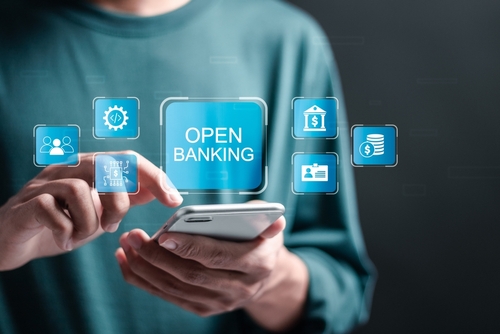Have you ever used a budgeting app that automatically pulls in all your transactions from different bank accounts and credit cards? Or applied for a loan online and instantly verified your income by securely linking your bank account? If so, you’ve already experienced the power of open banking—a financial innovation that is transforming how Australians manage their money.
At its core, open banking is about giving you more control and transparency over your own financial data. It’s the driving force behind many of the convenient financial apps and services now available in Australia. At Remitly, we believe that understanding these tools is key to making confident financial decisions. This article will break down what open banking is, how it works under Australia’s regulations, its benefits and risks, and what it could mean for your financial future.
What is Open Banking?
Open banking is a secure system that allows you to share your financial data from your bank with other authorised companies, such as fintechs and financial service providers. The principle is simple but revolutionary: you own your financial data and should decide who can access it and for what purpose.
The Core Idea
For decades, your financial data—like transaction history and account balances—was locked inside your bank. To use another financial service, you often had to manually provide this data or risk sharing your login details through a process called screen scraping. Open banking changes this. Instead, it creates a secure and standardised way for banks to share specific data with another provider, but only with your consent.
How Does Open Banking Work in Australia?
In Australia, open banking is part of a broader framework called the Consumer Data Right (CDR). The CDR gives you the legal right to access and share your data securely with accredited providers.
Here’s how it typically works:
- You grant permission: When using a fintech app or service, you’ll be asked to connect your bank account through a secure portal. You’ll see exactly what data will be shared (for example, your transaction history or account balance) and for how long. Nothing happens without your consent.
- The bank provides a secure gateway: Once you agree, your bank uses an API (Application Programming Interface) to provide secure, read-only access to the data you’ve authorised.
- The app delivers a service: With your consented data, the app can help you budget, analyse spending, apply for loans faster, or even switch to better financial products.
Real-World Examples in Australia
- Budgeting apps: Services like Frollo and WeMoney use open banking to give Australians a full view of their finances across multiple accounts.
- Loan applications: Instead of uploading payslips or bank statements, lenders can securely verify your income and spending patterns within minutes.
- Energy and telco comparisons: Under the CDR, open data will expand beyond banking to cover energy, telco, and even superannuation—helping Australians compare and switch providers more easily.
- The Benefits of Open Banking
- A complete view of your finances: Link accounts from different banks and see everything in one place.
- Smarter financial tools: Apps can categorise spending, identify unused subscriptions, or automate savings.
- Faster loan approvals: Lenders can verify your financial position digitally, reducing paperwork and wait times.
- Better competition: With more fintechs and banks competing for your business, you’re more likely to see innovative products and lower fees.
Is Open Banking Safe in Australia?
Security and privacy are at the heart of Australia’s open banking system.
- Accreditation: Only providers accredited by the Australian Competition and Consumer Commission (ACCC) can access your banking data.
- Bank-level security: Data is shared via encrypted APIs, not by handing over your login details.
- Consent and control: You decide who can access your data, what they can see, and for how long. You can withdraw consent at any time.
- The biggest risk is still choosing disreputable apps. Always look for apps accredited under the CDR before connecting your accounts.
What Open Banking Means for Small Businesses
Open banking isn’t just for individuals. SMEs in Australia can benefit from:
- Streamlined accounting: Connecting directly to platforms like Xero or MYOB.
- Faster financing: Lenders get real-time cash flow insights, speeding up approvals.
- Better payment options: New payment methods that reduce reliance on cards and cut processing costs.
Final Thoughts: Taking Control of Your Data
In Australia, open banking is part of a broader shift towards open finance, where control of your financial data rests with you. It enables better tools, faster services, and stronger competition between banks and fintechs.
By understanding how it works under the Consumer Data Right, you can confidently make the most of these innovations to build a smarter financial future.
FAQs
What’s the difference between open banking in Australia and overseas?
In Australia, open banking is part of the Consumer Data Right (CDR) and is regulated by the ACCC. In the UK and Europe, open banking is mandated under PSD2, while in the US it is still mostly industry-driven.
Is open banking safe in Australia?
Yes, provided you use apps accredited by the ACCC. These providers follow strict security and privacy requirements, and your data is always encrypted.
Do I have to pay to use open banking services?
As a consumer, no. Most budgeting and finance apps are free to connect. Some may charge for premium features, but data sharing itself does not cost you.
Which banks in Australia support open banking?
All of the “Big Four” (Commonwealth Bank, NAB, Westpac, ANZ) plus many smaller banks and credit unions already support it under the CDR. More providers are being added regularly.
Can I use open banking beyond banking?
Yes. The CDR framework is expanding to include energy, telecommunications, and superannuation. That means soon you’ll be able to securely share data across a range of industries to get better deals.
